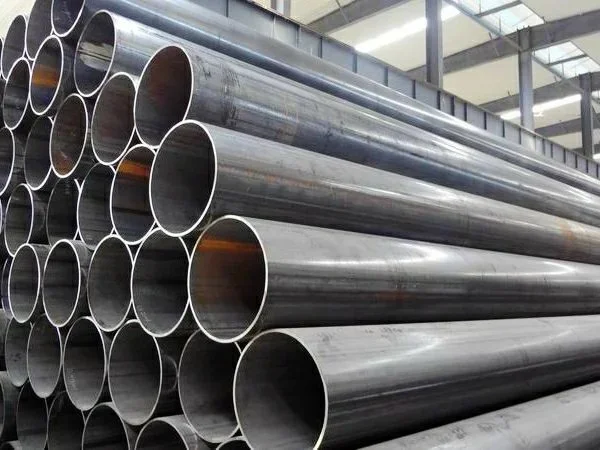How is ERW straight welded pipe produced?
ERW straight welded pipe is a common steel pipe product, and its production process involves multiple links and process steps. This article will introduce the production process of ERW longitudinal welded pipe from the aspects of raw material preparation, steel plate forming, welding, straightening, cutting, and inspection.

1. Raw material preparation
The raw material of ERW straight welded pipe is mainly steel plate, whose quality and specification have a great influence on the quality and performance of the final product. Therefore, in the production process, it is first necessary to carry out quality inspection and specification screening on the steel plate to ensure that it meets the production requirements. At the same time, the steel plate needs to be processed such as cutting and flanging for subsequent forming and welding.
2. Steel plate forming
Steel plate forming is one of the key steps in the production process of ERW straight welded pipe. In this step, the steel plate is bent and curled several times and finally formed into a circular or square section with a certain diameter and wall thickness. During the forming process, equipment such as forming rollers and forming machines are required to ensure the accuracy and consistency of steel plate forming.
3. Welding
Welding is the core step in the production process of ERW straight welded pipe. In this step, the formed steel plate passes through the high-frequency current to generate heat at both ends of the steel plate, so that it is welded together under a certain pressure. Parameters such as current, pressure, and welding speed need to be controlled during the welding process to ensure welding quality and weld consistency.
4. Straightening
Straightening is one of the important steps in the production process of ERW straight welded pipe. In this step, the welded steel pipe needs to be processed by a straightening machine to eliminate defects such as deformation and twists produced during the welding process. During the straightening process, parameters such as straightening force and straightening speed need to be controlled to ensure that the shape and size of the steel pipe meet the requirements.
5. Cutting
Cutting is the last step in the production process of ERW straight welded pipe. In this step, the straightened steel pipe needs to be processed by a cutting machine to be cut into a certain length of steel pipe product. During the cutting process, parameters such as cutting speed and cutting accuracy need to be controlled to ensure that the length and size of the steel pipe meet the requirements.
6. Inspection
Inspection is one of the important links in the production process of ERW straight-welded pipe. In this step, quality checks are required on the steel plate, forming, welding, straightening and cutting to ensure that the quality and performance of the final product meet the requirements. Various testing equipment and tools, such as ultrasonic flaw detectors, magnetic particle flaw detectors, hardness testers, etc., are needed in the inspection process to detect the weld seam, wall thickness, size, and physical properties of steel pipes.
To sum up, the production process of ERW straight welded pipe involves many links and process steps, and the quality and precision of each link need to be strictly controlled to ensure that the quality and performance of the final product meet the requirements.
Related news of ERW straight welded pipe
Dimensional tolerance of ERW steel pipe
Difference between ERW and DSAW pipes
Process and quality performance comparison for ERW steel pipe , SSAW steel pipe & LSAW stel pipe






